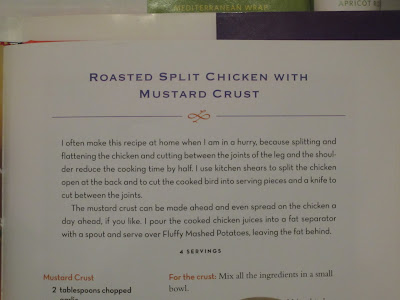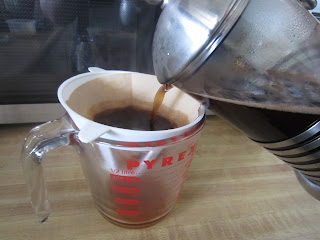Pork carnitas is perhaps one of my favorite Mexican dishes. There are numerous recipes out there for carnitas, and my old standby has always involved using the slow-cooker, which, I have to say, makes it a super easy dish to make. But I recently came across one where a dutch oven (and the actual oven) is used and I decided to try it.
The basic recipe I used, with a few minor adjustments of my own, was found here.
If you've never made carnitas before, or don't know what it is, basically, it's just spice rubbed pork (usually loin or butt), which is cooked with some liquid until it's tender and easily pulls apart.
One of the most appealing things about this recipe was that the pork was seared (on the stove top) on each side first, which usually seals in the juices and flavor. It can also give the pork a nice crust on the outside adding texture.
 |
| The pork searing in the pan. |
Her recipe calls for 12 oz of beer, but I split it with chicken broth (6 oz of beer and 6 oz of broth)... that way I had something to sip on while I was cooking. ;) Also, though her recipe didn't call for it, I added about 3 whole garlic cloves, a roughly chopped onion, and a bay leaf to the pot for a little more flavor.
 |
| It was one tasty orange--I almost regretted sacrificing it for its juice. |
The recipe says to cook the pork for a half an hour with the lid on at 350°. And then without the lid for an hour and a half--turning the pork every half hour. I didn't have quite as much pork as her recipe called for (3 lbs, I had 1.75). So I cut the total time to just under 1.5 hours, and turned the pork every 20 minutes.
When I took it out of the oven to pull-apart, I struggled a bit. It didn't seem to be as tender as when I cook it in the slow cooker, but I admit, I cut some of the fat off of the pork before cooking it even though her recipe said not to... so that may be partly why (there was not enough fat to melt into the meat and make it more tender).
However, the flavor and texture were still out-of-this-world!
Though usually served as tacos--I figured I could forgo the tortillas and served the carnitas with shredded lettuce, fresh chopped grape tomatoes, diced avocado, salsa verde, sour cream, and lime wedges.
I have to say it was really freaking good. It was one of those things I was so happy to have leftovers from. My taste-tester and friend, Andrea, was even quoted as saying, "the flavor is outrageous!" Well... she might not have said that exactly, but it was close.
 |
| So, sooooooo good. |






































